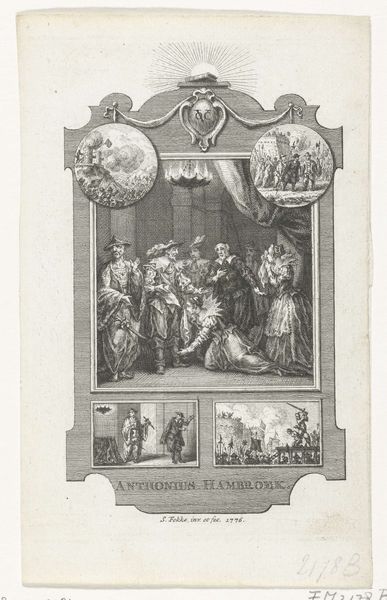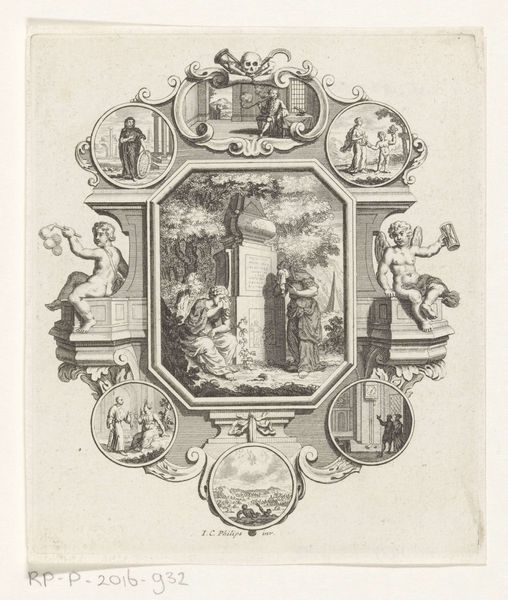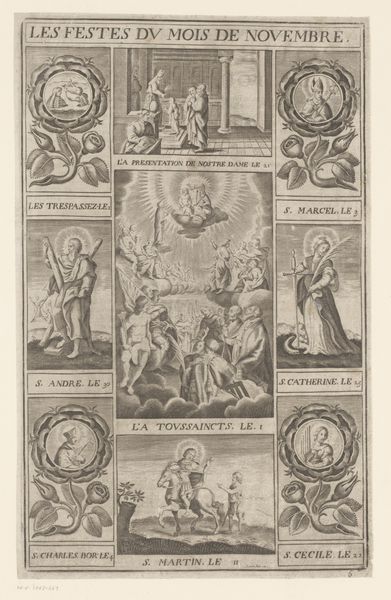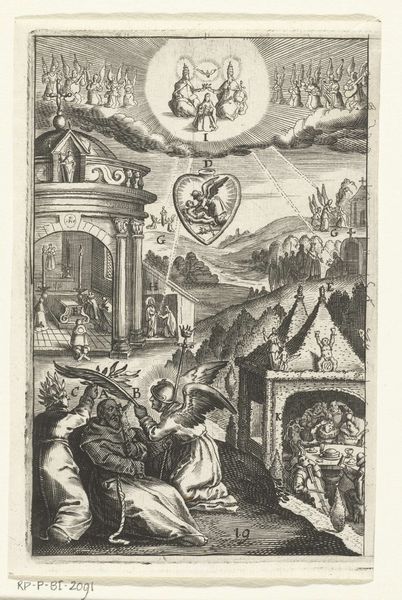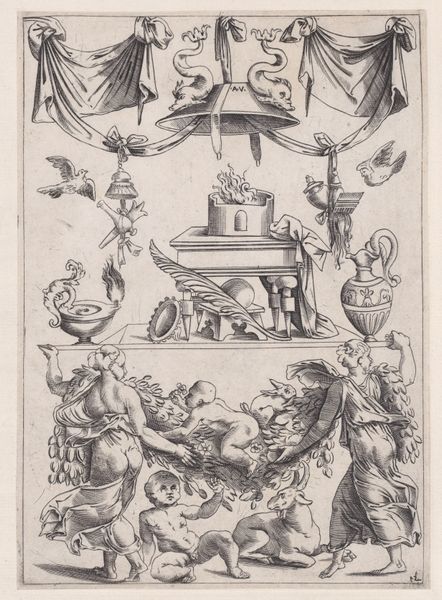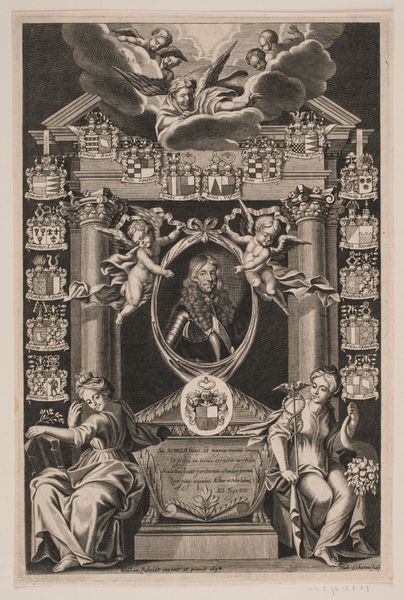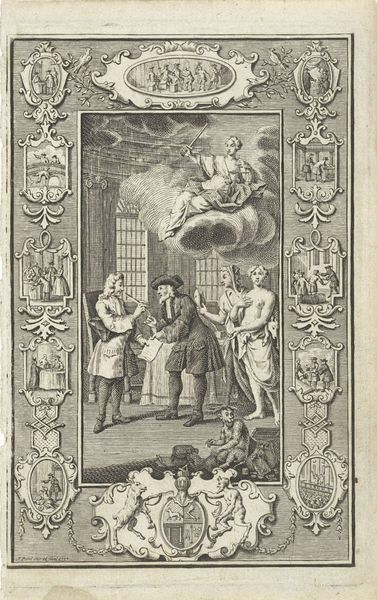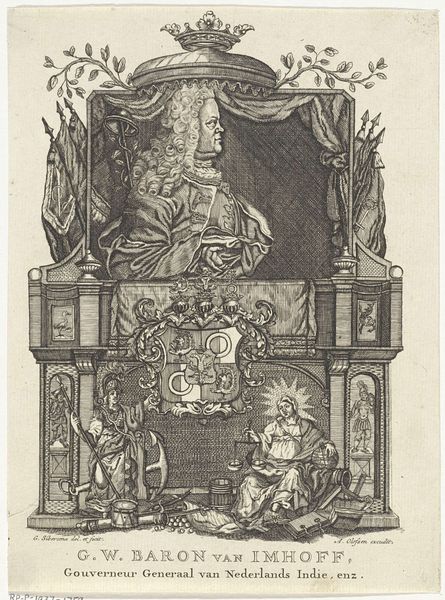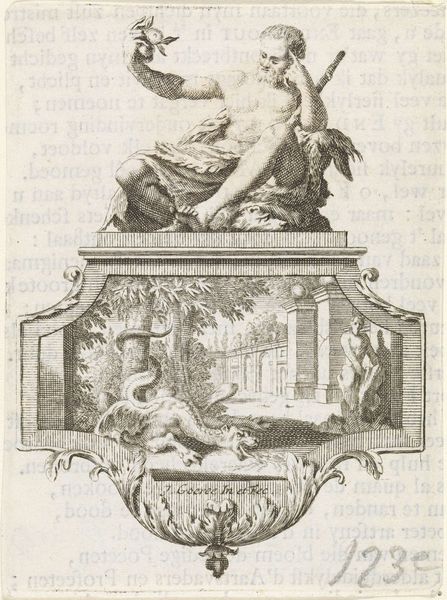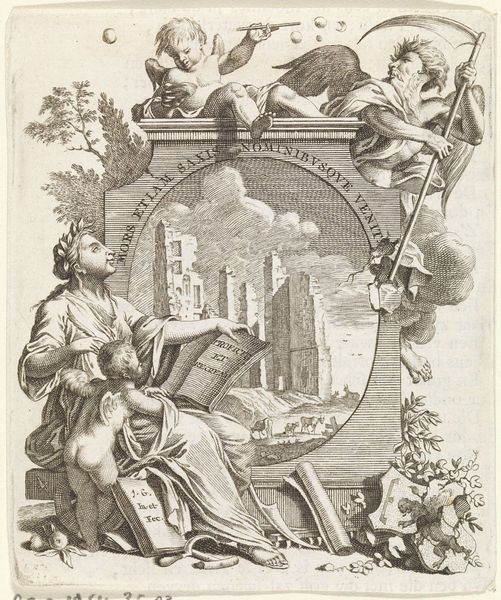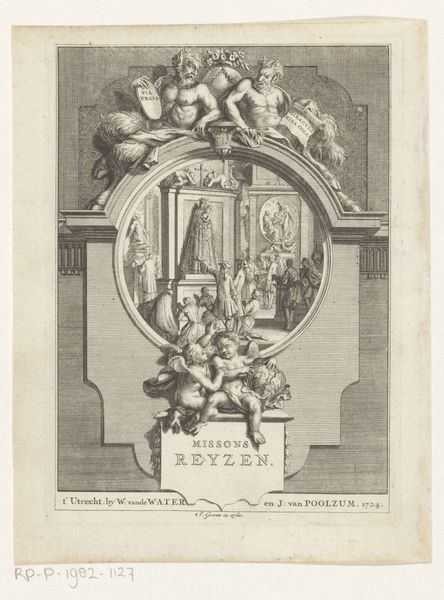
weaving, engraving
#
allegory
#
baroque
#
weaving
#
genre-painting
#
history-painting
#
engraving
Dimensions: height 232 mm, width 192 mm
Copyright: Rijks Museum: Open Domain
Curator: This engraving is titled "Minerva leidt een weverij", created by Bernard Picart in 1717. It's currently held at the Rijksmuseum. Editor: It's immediately striking—the scene feels so industrious and classically inspired, but there's an almost chaotic energy in the arrangement. Like multiple stories being told at once. Curator: Yes, Picart combines allegory and genre-painting with references to history within a Baroque framework. It's an incredibly detailed weaving, pun intended perhaps, of different traditions. Consider how the choice of Minerva, Roman goddess of wisdom and crafts, elevates this depiction of weaving from a simple craft to something of vital societal importance. Editor: Absolutely, locating the act of weaving under the banner of Minerva reads as both celebration and a legitimization of labor, particularly the labor performed by women. Weaving in this context becomes a form of knowledge, a display of skill, and a potential source of power, wouldn’t you agree? Curator: I do. Picart created this at a fascinating time, with the Dutch Republic at its height of economic power partially built upon textile production, and Amsterdam becoming a center of intellectual life. Images like this acted as visual propaganda, reinforcing ideas about Dutch ingenuity, wealth, and social harmony, through their trading ships leaving the harbor shown in the background, as well as the diversity represented by the colonial worker on the left, seemingly doing accounting. Editor: I noticed that, too— the placement of that worker makes me think about labor beyond Europe's borders. And how textiles were—and are—tied to histories of colonization and exploitation. Seeing him there complicates the otherwise ideal scene for me; his posture already seems bowed from keeping track of materials coming in, likely on those ships out to sea, while all others participate in the weaving without such a clear labor burden. Curator: It adds a layer of discomfort, doesn't it? Which might be the most compelling thing the print offers us today. It invites a critical consideration of how Dutch identity and wealth were constructed and represented. Editor: Ultimately, “Minerva leidt een weverij” makes you reflect not only on skill and artistry, but also on who benefits, and what stories are intentionally left out of the official narrative. Curator: A truly powerful message communicated by a stunning artwork from the Dutch Golden Age.
Comments
No comments
Be the first to comment and join the conversation on the ultimate creative platform.

